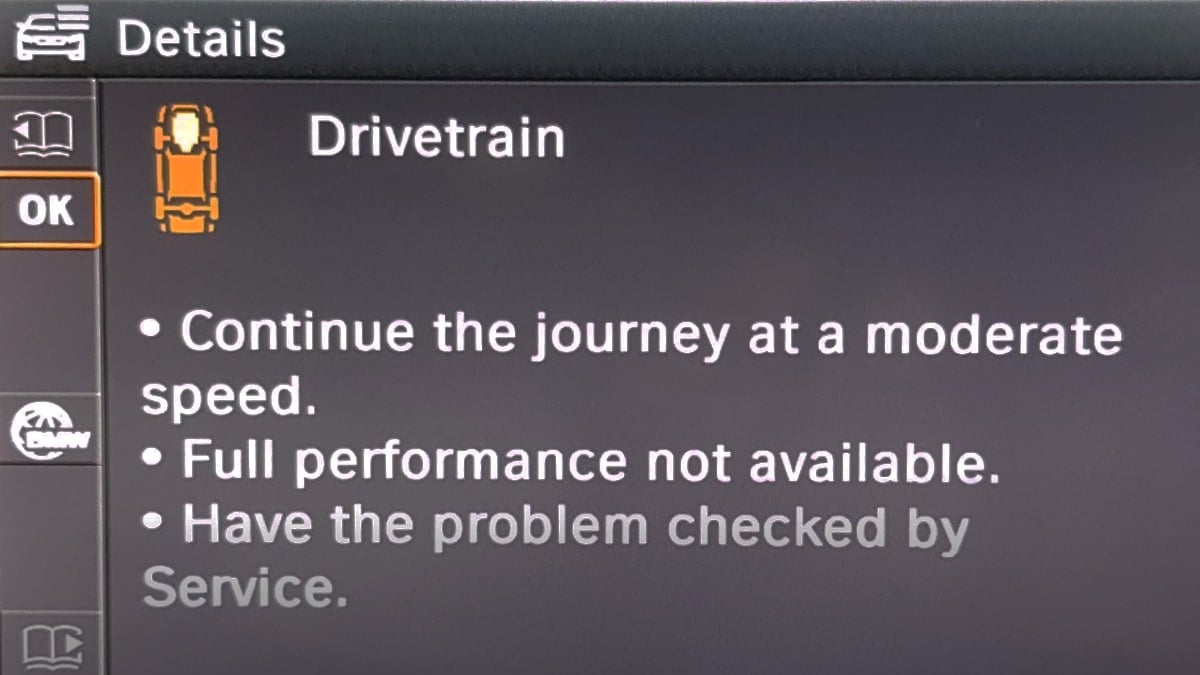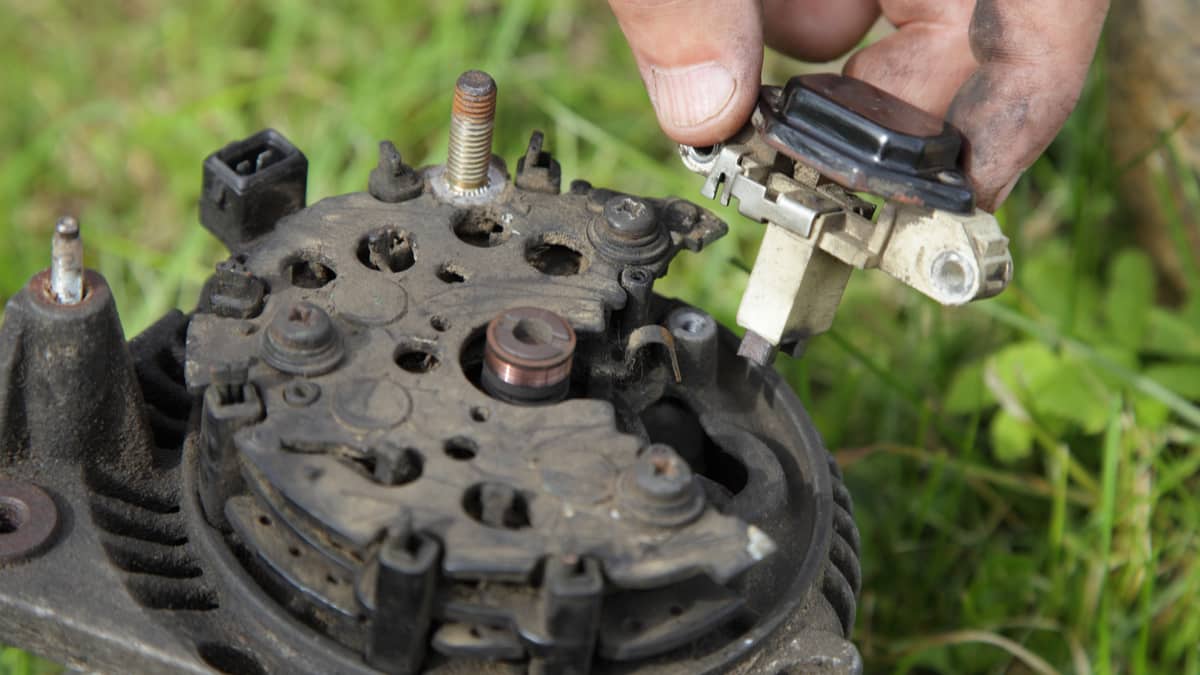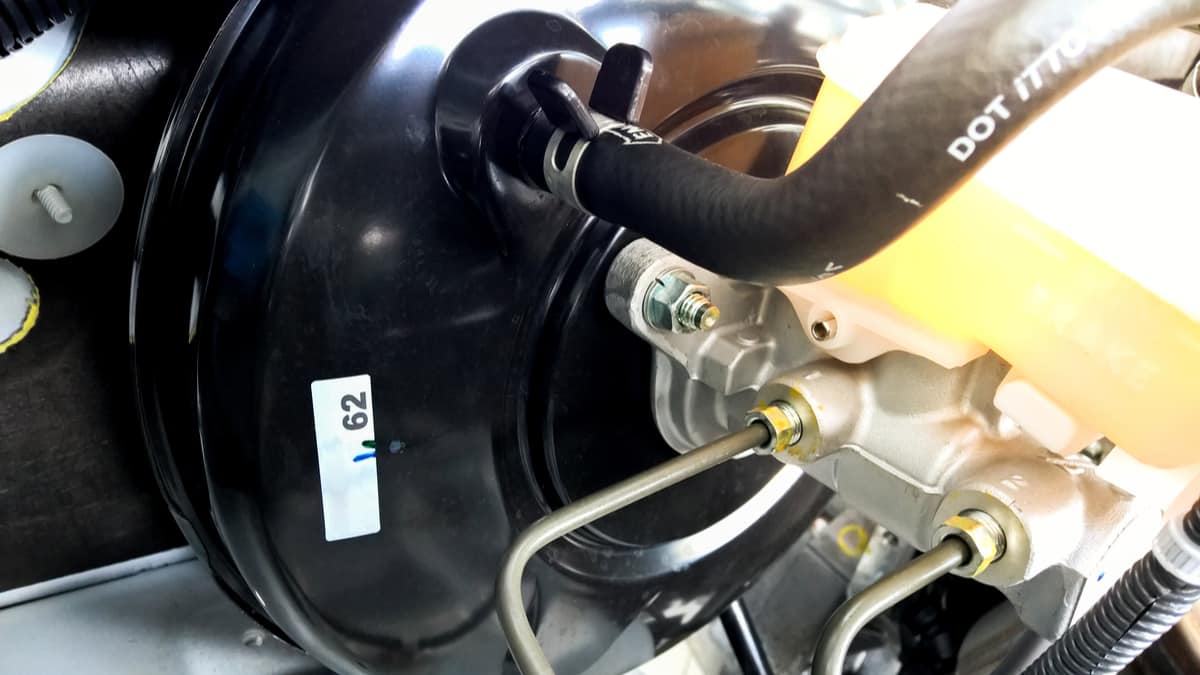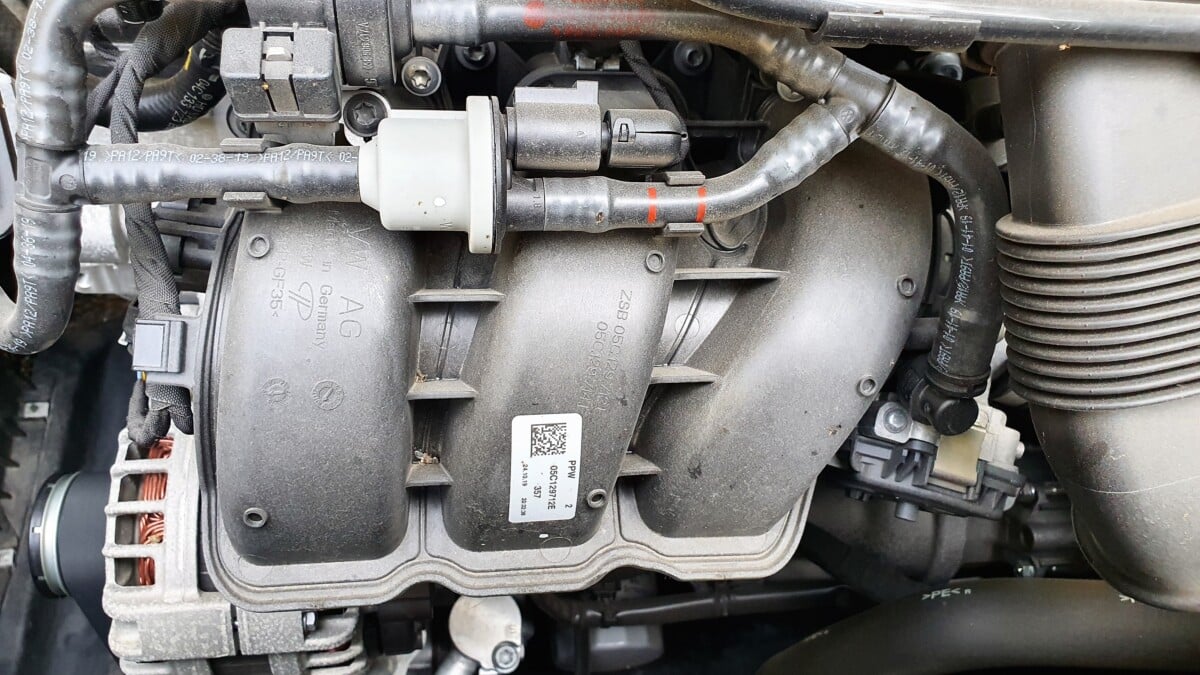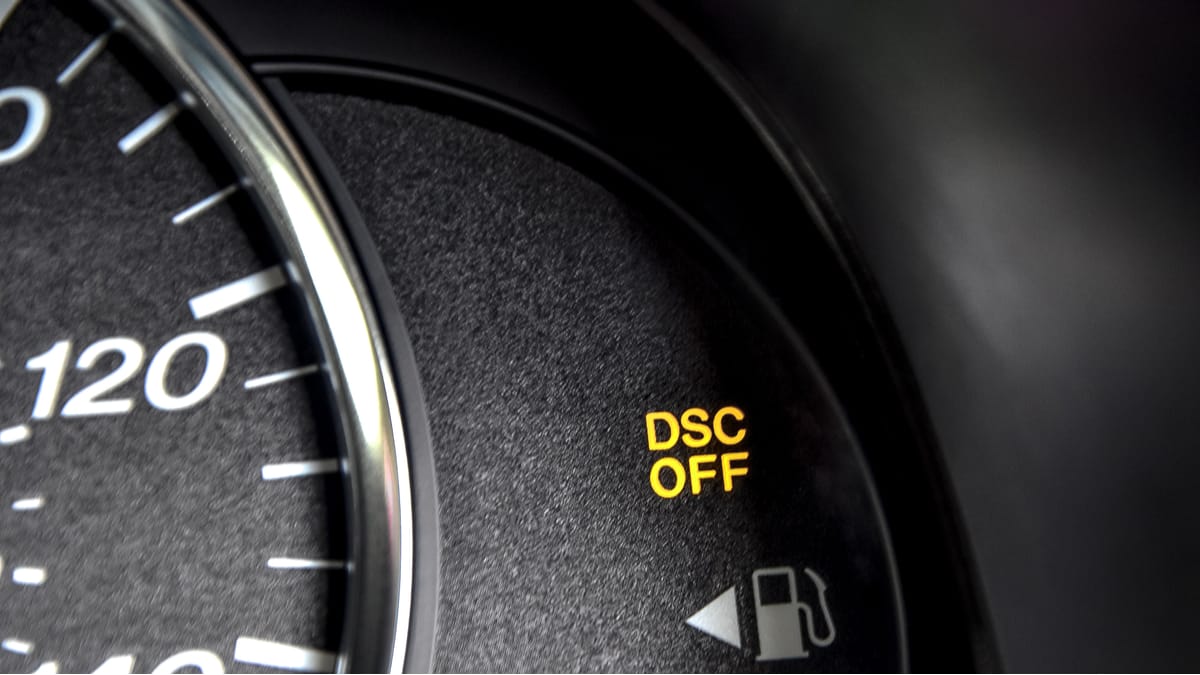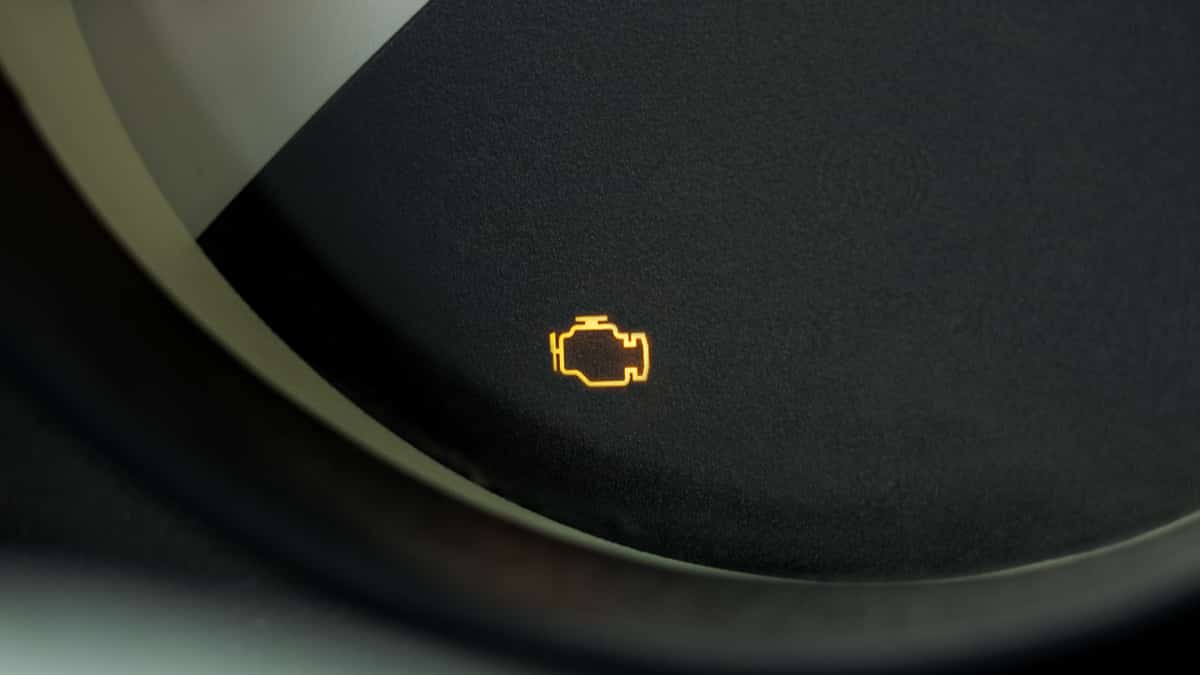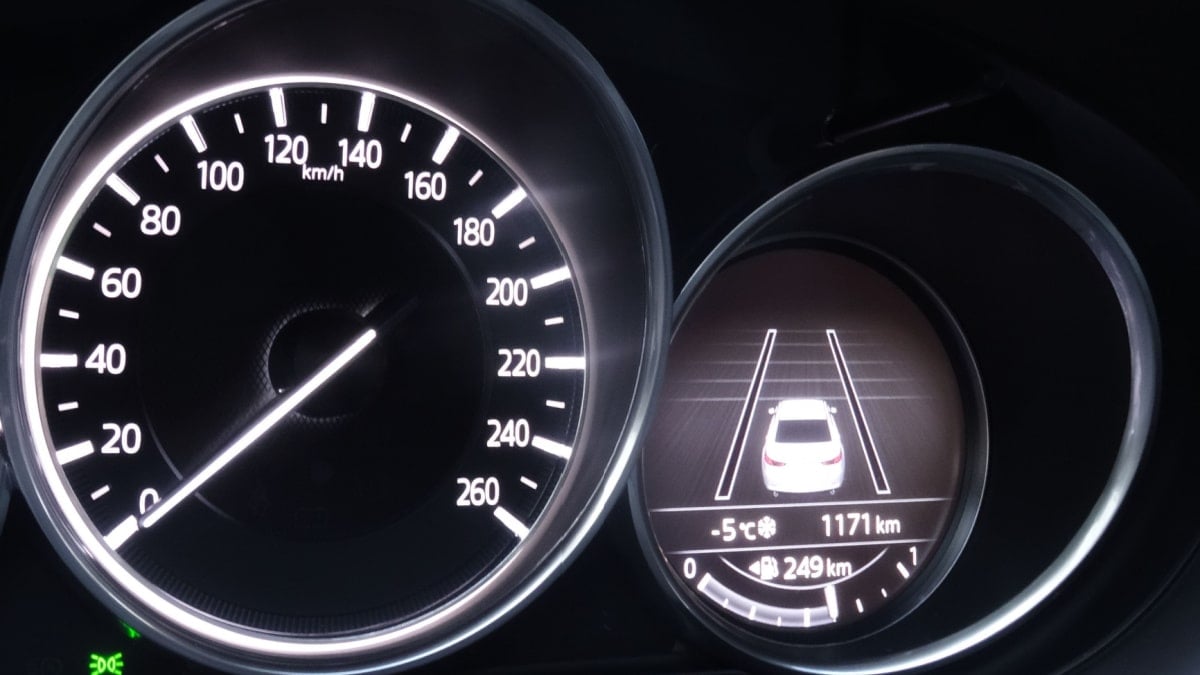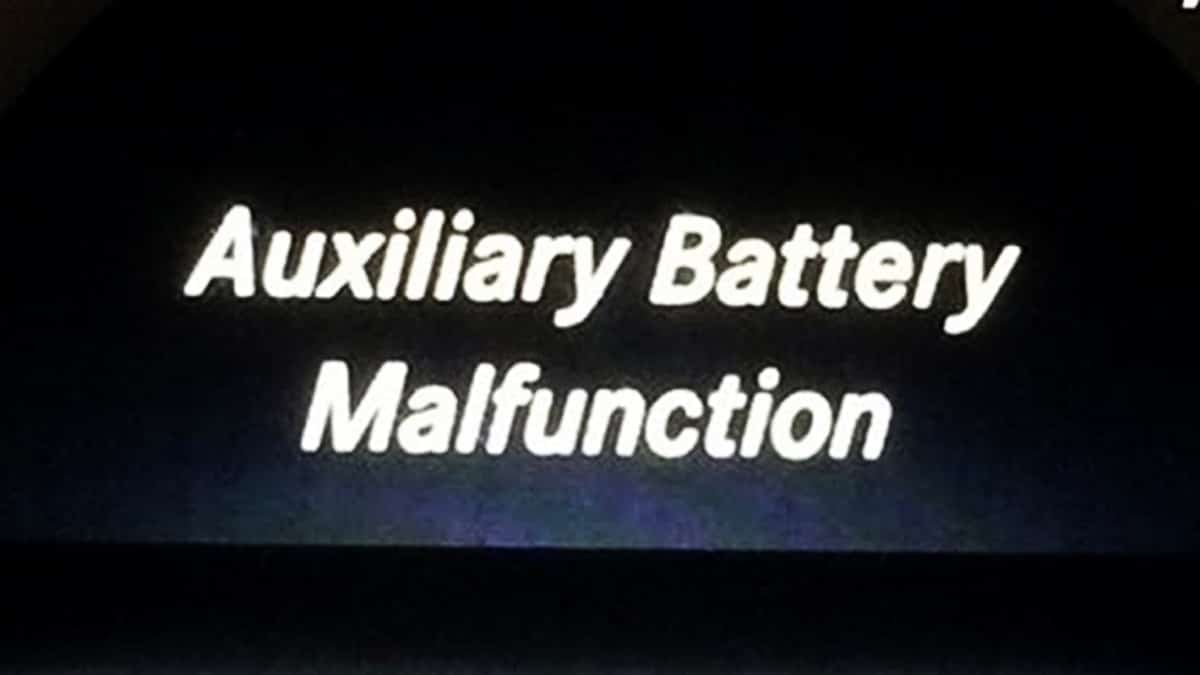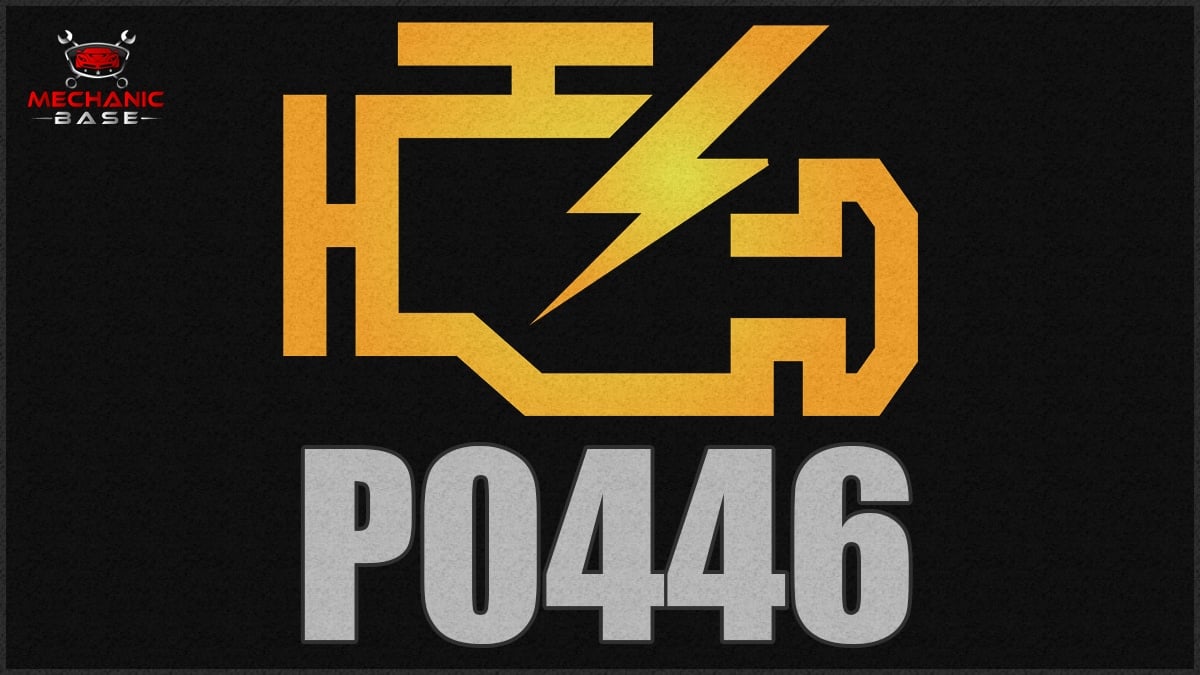If you are a BMW car owner, you either already have or will most likely see a Drivetrain Malfunction warning at some point, but what causes the drivetrain malfunction message on BMW vehicles, and what does it mean?
In this guide, I cover the meaning of this troublesome error message and discuss the top causes. I also look at the available fixes and evaluate whether you should keep driving or not.
What Does The Drivetrain Malfunction Message on BMW Mean?
When the drivetrain malfunction message appears, it indicates that there is a problem with an engine or transmission component. It can be a problem with the vehicle’s ignition or fuel system, but it is sometimes a problem with the transmission.
Depending on the problem, strange symptoms occur, which could include the fail-safe driving mode. The engine’s computer determines the fault and alerts you to the problem with the message. At the same time, the fail-safe driving mode, otherwise known as limp mode, might be activated. This mode ensures that no further damage occurs to the engine or transmission, giving you the time you need to get your car to a safe location for repair.
Causes of BMW Drivetrain Malfunction
There are many different causes of the BMW drivetrain malfunction message, and the best way to determine what is wrong is to read the trouble codes. Here are some common causes of the BMW powertrain error message:
1. Fouled Spark Plugs
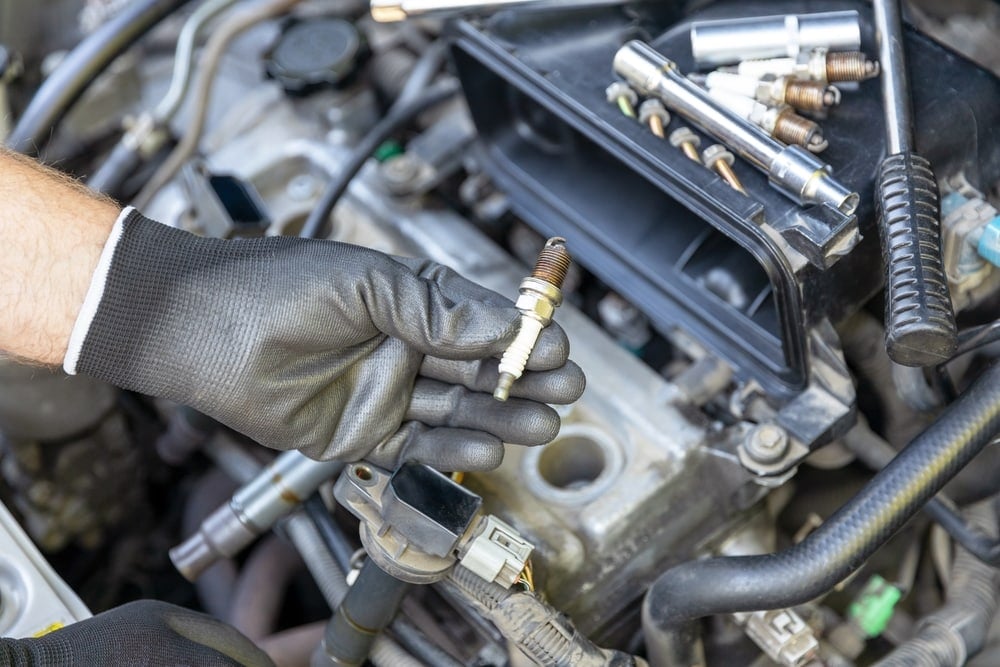
A misfiring engine is sure to lead to a Drivetrain Malfunction error. One of the main culprits of a misfire is fouled spark plugs. Your problem could be one plug or multiple.
As the plugs become older, they can no longer provide the spark required to keep the engine running right. If you were to continue driving like this, you could cause permanent damage to the catalytic converter and engine. That’s why it’s important to perform tune-ups at regular service intervals.
2. Failed Ignition Coils
Ignition coils provide the necessary electricity to the car’s spark plugs, so engine operation can continue. When the coils go bad, power can’t be distributed to the spark plugs.
As a result, you will notice a misfiring engine and a loss of power. There will also be noticeable performance issues while idling. You wouldn’t normally replace the ignition coils at regular intervals. They are only replaced when they go bad.
RELATED: 6 Symptoms of a Bad Ignition Coil
3. Malfunctioning Fuel Pump
The engine requires the right amount of fuel to work its best. If the Drivetrain Malfunction error occurs, there could be a problem with the fuel getting to the engine. If the pump has failed, you will notice this warning, along with several performance issues.
Because the fuel pump is responsible for transferring gas to the engine, any failure will lead to starvation of the motor. You will see an inconsistent supply of fuel, leading to power loss and random surging. Once the pump fails completely, it can be impossible to start the engine.
RELATED: 8 Symptoms of a Bad Fuel Pump
4. Failing Fuel Injectors
The fuel injectors are also a vital part of the fuel system. The injectors push the fuel into the combustion chamber of the engine. If one gets damaged, the fuel won’t get where it needs to go.
Instead, you will end up dealing with a misfiring engine, stalling, strange vibrations, or a rough idle. It could also keep you from starting the engine.
5. Bad Catalytic Converter
The catalytic converter is a vital part of the emissions system. Inside the catalytic converter, there are precious metals that help to convert dangerous gases into products that can be dispersed into the environment. It turns CO, NO2, and NO into carbon dioxide and water vapor.
When the catalytic converter fails, the exhaust emission rate slows down, leading to a build-up of pressure. With a clog in the converter, the combustion chamber flow can slow down as well, causing a stalling situation and a Drivetrain Malfunctioning message.
How To Fix The BMW Drivetrain Malfunction Message?
To fix the BMW drivetrain malfunction message, you need to read the error codes from the engine and transmission control modules with an OBD2 scanner to determine what is causing the problem. You can also try restarting the engine and inspecting the engine quickly.
Here is a more detailed list of how to fix the BMW drivetrain malfunction warning message:
1. Restart Motor
When the error first pops up on the dash, you want to pull over safely to the side of the road. It’s best to turn the engine off and let it sit for a moment. There’s always the chance that the message is just a fluke. After five to ten minutes of resting, restart the engine.
However, you want to skip this step if the car message comes on and the drivetrain goes into limp mode. In this case, it’s best to simply get the car where it needs to be, because it might not start again once you shut down the engine.
2. Inspect Engine
Before you go any further, it’s best to take a quick look at the engine. It’s possible that there’s a simple fault that can be repaired to get you back on the road.
For example, there might be an oil or transmission fluid leak that needs to be repaired. If you notice anything obvious, you’ll have a better idea of what needs to happen next.
3. Scan Codes

If there’s no visible reason for the warning message, it’s time to use your code-scanning tool. Make sure your scan tool is compatible with your BMW vehicle before proceeding.
With most BMW vehicles, the DME (digital motor electronic) is responsible for storing codes coming out of the engine, while the EGS (electronic gearbox) or AGS (adaptive gearbox) sends out the codes from the transmission. You will need to scan both modules to get all of the error codes.
Here’s what the steps look like to get the codes.
- Find the OBD II port in your BMW. It’s usually located below the dashboard on the driver’s side.
- Plug your code scanner into the port.
- Turn the key in the ignition to the On position. Do not start the engine.
- Select the appropriate vehicle model and specs in your scanner.
- Read all of the DTCs coming from the DME and the EGS/AGS modules.
Make a note of the trouble codes so you know what you are dealing with. If you aren’t able to get the codes because you don’t have a compatible scanner, you will need to move on to visit a mechanic. You don’t want to guess what the problem is.
4. Repair Faults
With the codes in hand, you should have a better idea about what should be fixed. You might be able to perform some of the more basic repairs yourself. The cost will vary based on what needs to be repaired and whether you need help from a professional.
As an example, changing the spark plugs might cost you $100 or less, especially if you can do it yourself. On the other hand, replacing the catalytic converter could run $950 to $2,500, even if you don’t need a professional’s help.
You should also look for technical service bulletins, because many BMW models have bulletins about the drivetrain malfunction issue.
5. Get Help from a Mechanic
If the job seems to be too complicated at any stage in the diagnosis or repair, it’s time to get help from a professional. You may need to find a specialized BMW mechanic, as these luxury cars aren’t meant to be worked on by just anyone.
Not only should a specialized scanner be used, but some of the repairs go beyond what’s ordinary. You will pay more to visit a BMW mechanic, but the guarantee you get is enough to provide peace of mind.
Is It Safe to Drive MY BMW with a Drivetrain Malfunction Message?
There are some messages that come up that don’t need to cause major alarm. Sadly, the Drivetrain Malfunction message isn’t one of them. You should always take the BMW drivetrain malfunction message seriously, to the stage of critical importance.
Once the message comes on the dashboard and your vehicle goes into limp mode, you need to make a beeline for your home or your repair shop immediately. No other stops should be made, and you should turn on your hazard lights just in case the vehicle stops suddenly.
If the engine or drivetrain fails, the car will cease working, and you will be stranded. This problem can lead to a major accident and possible injury. Additionally, driving the vehicle longer than necessary could cause bigger mechanical issues, even with the motor in a limp mode.
The only thing you can do is take care of your BMW and hope this situation never occurs to you. With regular maintenance and proper tune-ups, there’s less chance of engine and transmission failure. Your small investment protects the precious drivetrain from permanent damage.
How serious is the BMW drivetrain malfunction?
The BMW drivetrain malfunction message should be taken seriously because there are so many different things that can cause this error message to appear. To determine if it is serious, you must first diagnose the problem.
How much does it cost to fix a BMW drivetrain malfunction?
Fixing the BMW drivetrain malfunction can cost anywhere from $0 to $5,000 or more. There is no way to tell how much it will cost to fix the BMW drivetrain malfunction message without diagnosing it first.
Is the drivetrain covered under BMW warranty?
Yes. If your BMW is new and within the warranty limit, it should be covered. Review your warranty paperwork or call BMW to determine if your vehicle is still covered by their warranty. If you have an extended warranty, that can also help, depending on which warranty you have.
If the Drivetrain Malfunction warning message appears on your BMW’s dashboard, the first thing you should do is read the fault codes with a diagnostic scanner and continue troubleshooting from there. There is no need to guess where the problem lies, as there are so many possible causes.
If you do not feel comfortable diagnosing the problem yourself, contact a BMW dealership as soon as possible and they will be able to fix this warning light easily!
Learn more:
- Why Are BMWs Called Beamers or Bimmers? – The Story Behind
- Are BMWs Good Cars? Are They Reliable?
- BMW DSC Light – Meaning, Causes (& How To Fix It)
Tags: BMW
Categories: Troubleshooting, Warning Lights
